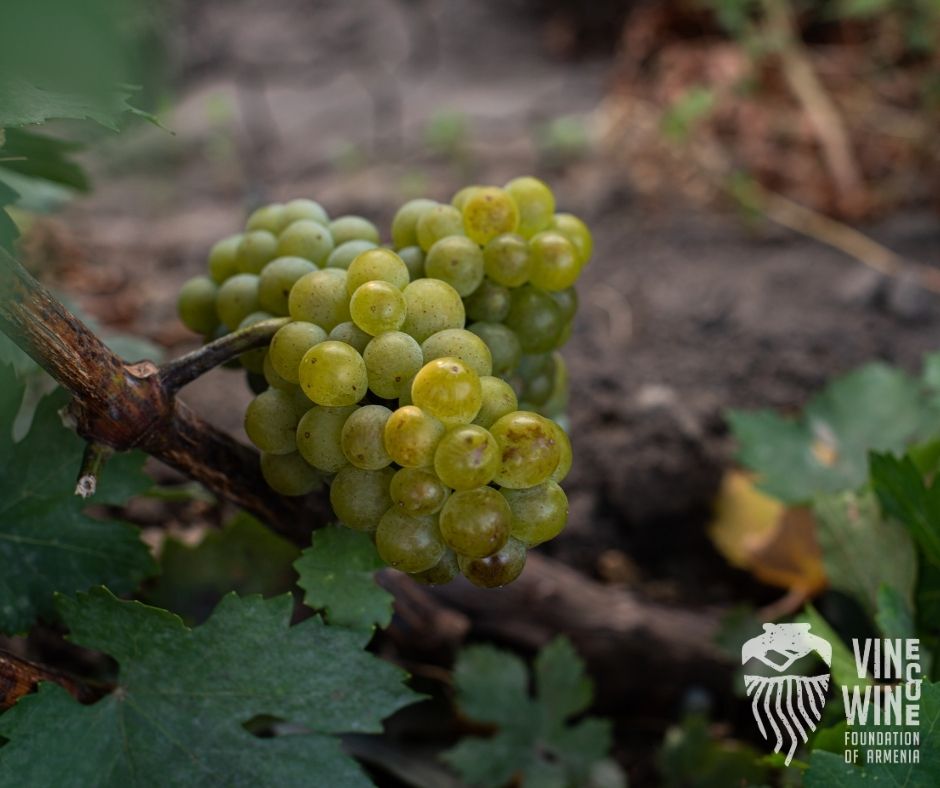Voskehat
Ampelographic characteristics:
 Sugar content – 23.3-26.5 %
Sugar content – 23.3-26.5 %
 Leaves are medium sized, round, and five lobed. Bunches are medium, cylindrical, branched. Berries are small, round, white.
Leaves are medium sized, round, and five lobed. Bunches are medium, cylindrical, branched. Berries are small, round, white.

Synonyms:
Kanachkeni, Katvi Achk, Kharji, Khach Kharji, Pishik
Resistance to diseases:
 Low resistance to fungal diseases.
Low resistance to fungal diseases.
Vegetative features:
 Medium – late maturing The variety reaches its technical ripeness in the middle – end of September, Shoot development is strong. The yield is medium to high – 8- 17 t/ha.
Medium – late maturing The variety reaches its technical ripeness in the middle – end of September, Shoot development is strong. The yield is medium to high – 8- 17 t/ha.
Climate conditions:
 Soils are rocky, calcareous and sandy. Frost resistance is low.
Soils are rocky, calcareous and sandy. Frost resistance is low.
 Wine characteristics:
Wine characteristics:
Voskehat is used for wine, grape juice, resins production, as well as it is consumed
freshly as a table grape.
The variety allows producing wines of diverse styles and types. Those can be fortified
wines like sherry, in case of late harvest – dessert wines. In the highland areas of Armenia it is
possible to produce nice dry wines from light and fresh style to buttery and complex one, as well
as lively sparkling wines.
The dominant aromas of this variety are pier, melon, flowery notes. The variety has gor a
very good aging potential.
 Historic notes:
Historic notes:
Voskehat is an ancient autochthonous Armenian grape variety, also called the queen of
white varieties. Translated from Armenian, the name of this variety means “golden berry”. Some
of the Voskeat vines in Armenia are more than 150 years old and still bear fruit.
According to the number of archaeological excavations in Taishabaina (Karmir Blur), the
cultivation of Voskehat started more than 3-5 thousand years ago. During those excavations, the
analysis of the antiquated seeds proved they belonged to Voskehat.
According to one of the legends Voskehat was as valuable as gold, and paid a tribute with
it: here comes another name of it “Kharji”, that is a tribute.
Voskehat is widely expended in Ashtarak, Echmiatsin and Armavir. It is also cultivated
in other winemaking regions of Armenia.

